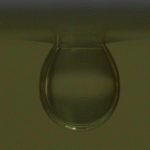Not too hot, not too cold”¦ the newly discovered exoplanet may be just right to support life.
A new Earth-sized exoplanet orbiting the nearby red dwarf star Gliese 581 may be habitable for human beings.
Gliese 581, discovered by a planet hunting team led by astronomers from the University of California and the Carnegie Institution of Washington, is located 20 light years from Earth in the Libra constellation.
Six planets orbit its mass. Two of these are located on the edges of what scientists call the “habitable zone”, but one is believed to be too hot and the other too cold to sustain human life. However a new discovery, the exoplanet Gliese 581g, might be “just right”, scientists believe.
The location of the exoplanet within the star’s “˜habitable zone’ means liquid water could potentially exist on the planet’s surface. Gliese 581g also has enough gravity to sustain an atmosphere, both of which are defined by astronomers as necessary for a planet to support life.
The planet is tidally locked to the star, so that one side always receives daylight and the other is shrouded in perpetual darkness. Scientists believe that any emerging life would be located on the perimeter of these two zones- known as “˜the terminator’- as temperatures would dramatically increase or decrease away from this line.
Only a small number of stars are currently monitored by planet hunters, so scientists are surprised that the discovery of a potentially habitable planet was made so soon. Steven Vogt, professor of astronomy and astrophysics at UC, believes that if habitable planets outside our solar system are so rare, the team shouldn’t have been able to find one that quickly.
“The number of systems with potentially habitable planets is probably on the order of 10 or 20 percent, and when you multiply that by the hundreds of billions of stars in the Milky Way, that’s a large number.” Vogt announced in a press release. “There could be tens of billions of these systems in our galaxy.”







